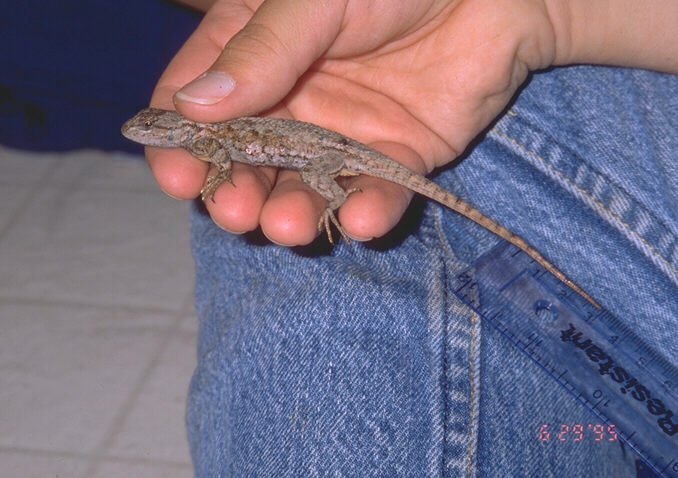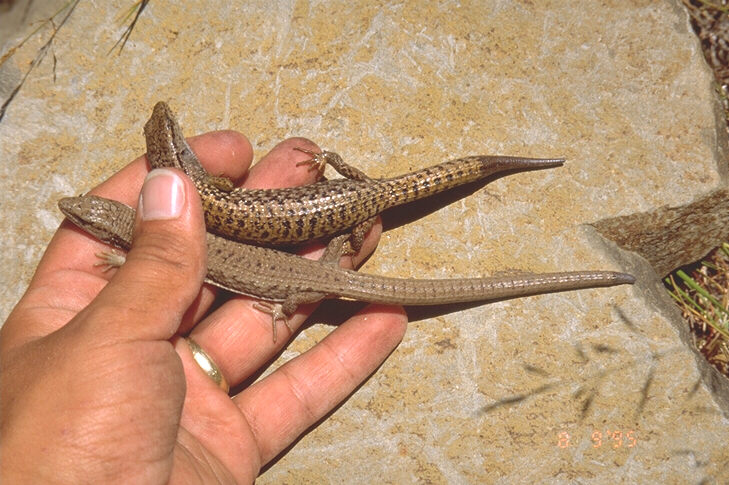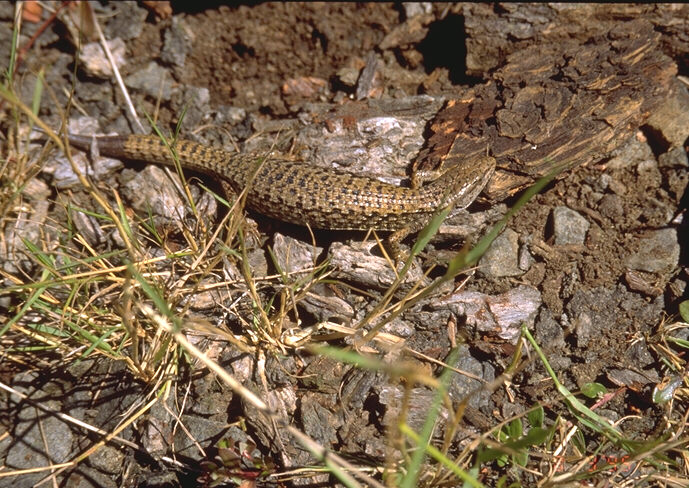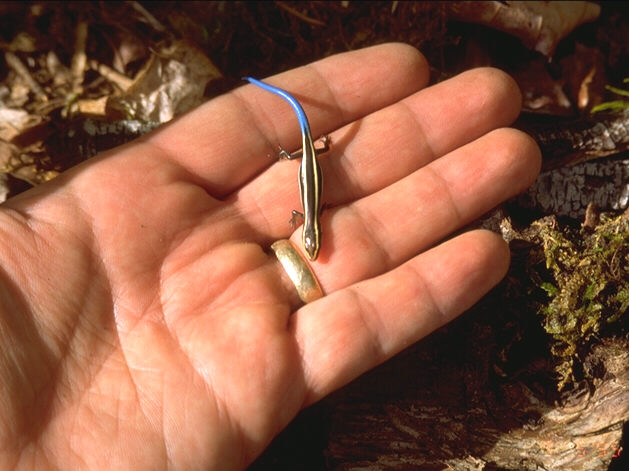
This lizard is most common at lower elevations, in relatively hot, dry areas that have little or no tree cover. Common locations are sunny slopes around reservoirs or rivers, rock outcrops and quarries, hot sunny clearcuts, and log landings with logs remaining to provide vertical structure and hunting areas.
Photographed by Lisa L. Hunter ..... Date: 6/29/95 ..... Photo: AAG-082

Rarely seen except when in hand, these lizards have impressive coloration underneath.
Photographed by Matthew G. Hunter ..... Date: 9/13/95 ..... Photo: AAG-084

This photo and the next show what might be a mated pair of lizards showing noticable differences in degree of pigmentation.
Photographed by Matthew G. Hunter ..... Date: 8/9/95 ..... Photo: AAG-085

The undersides of these two lizards show striking differences in pigmentation.
Photographed by Matthew G. Hunter ..... Date: 8/9/95 ..... Photo: AAG-086

The variegated pattern on the upper parts of this lizard blend well with diverse background. Aptly called the alligator lizard, this species does not hesitate to bite an unsuspecting captor. The bite is usually more startling than damaging, except when a larger lizard is involved.
Photographed by Matthew G. Hunter ..... Date: 8/9/95 ..... Photo: AAG-087

This is a rather small individual, hatched from an egg probably less than three months previous. Adults get to about three times the length of this one.
Photographed by Matthew G. Hunter ..... Date: 9/5/95 ..... Photo: AAG-090